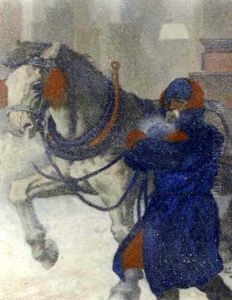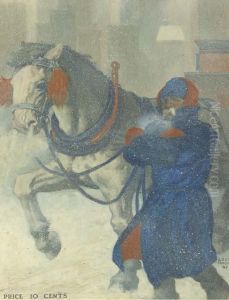Louis Fancher Paintings
Louis Fancher was an American artist, illustrator, and graphic designer, remembered for his versatile contributions to art and advertising during the late 19th and early 20th centuries. Born in Minneapolis, Minnesota, in 1884, Fancher showed an early interest in art, which led him to pursue formal education in the field. He studied at the Art Students League in New York and later refined his skills in Paris, a city known for its vibrant art scene and innovative artistic community at the turn of the century.
Fancher's career was diverse, encompassing book illustration, advertising, and poster design, as well as contributions to magazines and newspapers. He gained significant recognition for his work in commercial art, particularly for his innovative approaches to advertising and graphic design. His style was characterized by its bold use of color, dynamic compositions, and an ability to convey complex messages in visually engaging ways.
During World War I, Fancher's talents were enlisted to support the war effort, where he worked as a camouflage artist, designing patterns and structures to conceal military equipment and installations. This work demonstrated his adaptability and the practical application of his artistic skills in a variety of contexts.
In the 1920s and 1930s, Fancher expanded his professional repertoire to include interior design and architectural rendering. Despite the economic challenges of the Great Depression, he continued to receive commissions and maintain a successful career. His work during this period reflects a keen awareness of contemporary trends, including Art Deco and modernism, which he incorporated into his designs and illustrations.
Louis Fancher's contributions to American art and design were cut short by his untimely death in 1944. Nevertheless, his legacy endures through his varied body of work, which remains a testament to his creativity, versatility, and influence on the fields of illustration and graphic design. Fancher's ability to traverse different mediums and styles with ease marks him as a significant figure in the history of American art, whose innovations continue to be appreciated by scholars and enthusiasts alike.

